|
|||
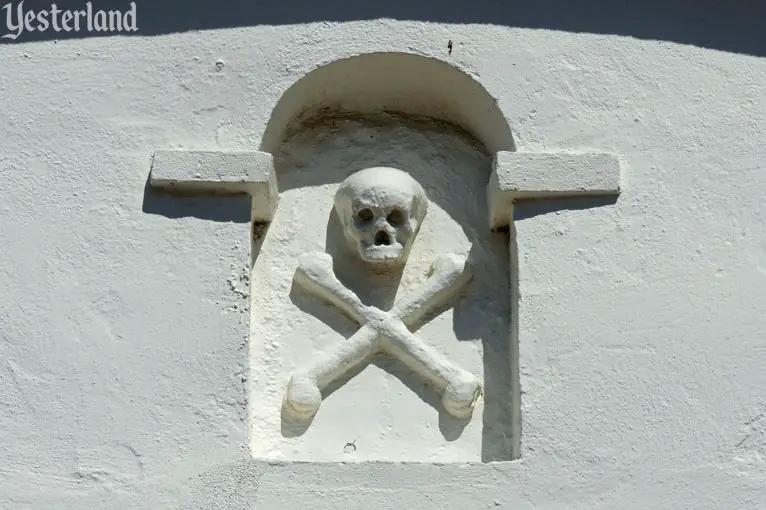
Photo by Werner Weiss, 2016 |
|||
|
A little bit of Disney has snuck into Knott’s Berry Farm. It has nothing to do with Disney character collectibles at Virginia’s Gift Shop. The skull and crossbones on Mission San Luis Rey, one of the California Mission dioramas that returned to Knott’s in late 2016, would not be there if it were not for Disney. Here’s the story. This is the fourth article in a series about restoring the models, putting them back on display at Knott’s, and how they compare to the real missions. Thanks to Chris Jepsen and M.H. Habata for their contributions to this series.
|
|||
|
|
|||
|
What does the skull and crossbones symbol suggest to you? Perhaps the first thing that comes to mind is the fear-inducing Jolly Roger flag on pirate ships. Then there’s the scary warning on containers of poisonous substances. Less well-known is that Spanish cemeteries, including Franciscan cemeteries in colonial times, used the skull and crossbones to mark their entrances. It’s because of cemeteries that the skull and crossbones came to symbolize death in the first place. Mission Santa Barbara still has creepy skulls and crossbones at its cemetery gate. But not all California Missions had them. Or at least they did not all survive into the 20th century. Earthquakes and weather took their toll. The missions all required substantial rebuilding. Details (and sometimes major features) changed. When artist Leon Bayard De Volo created his models of the 21 California Missions for Knott’s Berry Farm, he faithfully included Mission San Luis Rey’s cemetery entrance arch, as it looked in the early 1950s—unadorned. And that’s what guests saw in a display case on Knott’s El Camino Real until around 1998 (give or take a few years). The model of San Luis Rey was one of the 16 models that went into storage; five others somehow disappeared. |
|||
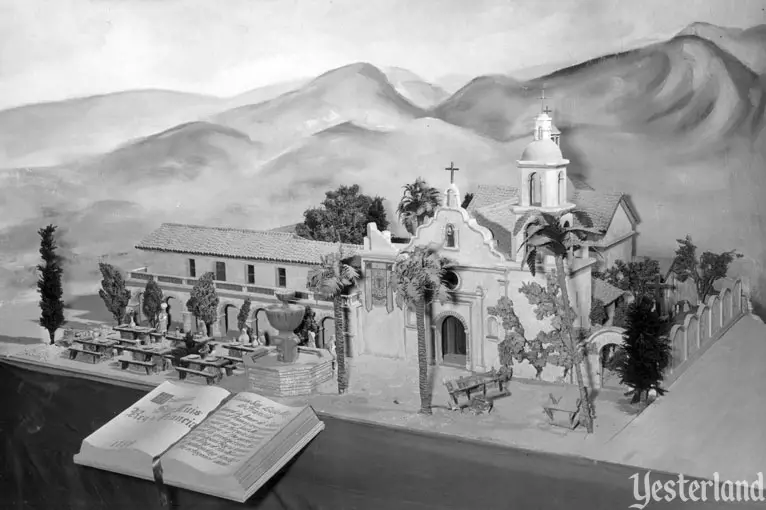
Image courtesy Orange County Archives, from the Knott’s Berry Farm Collection Artist rendering of how Mission San Luis Rey would look at Knott’s Berry Farm |
|||
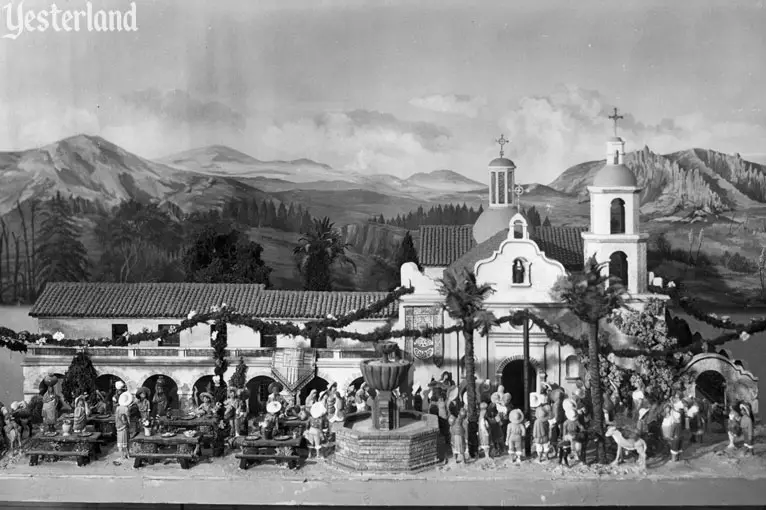
Photo courtesy Orange County Archives, from the Knott’s Berry Farm Collection Mission San Luis Rey model by Leon Bayard de Volo, first displayed in 1956 |
|||
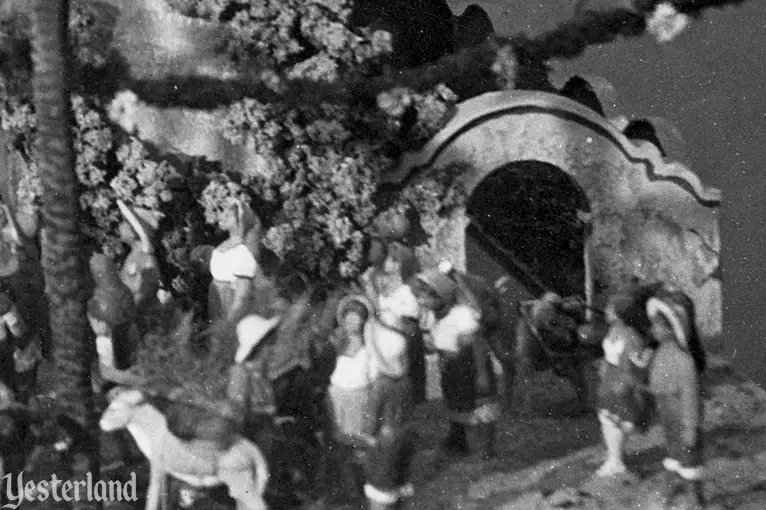
Photo courtesy Orange County Archives, from the Knott’s Berry Farm Collection Unadorned cemetery entrance arch at San Luis Rey (detail from the previous photo) |
|||
|
Now, fast-forward to 2013. The old models, which had deteriorated over the decades, had been in storage with no maintenance. Knott’s management gave their master woodcarver, Bob Weir, a new assignment. He would restore the old models and build five new ones. He would perform this work where park guests could watch him. |
|||
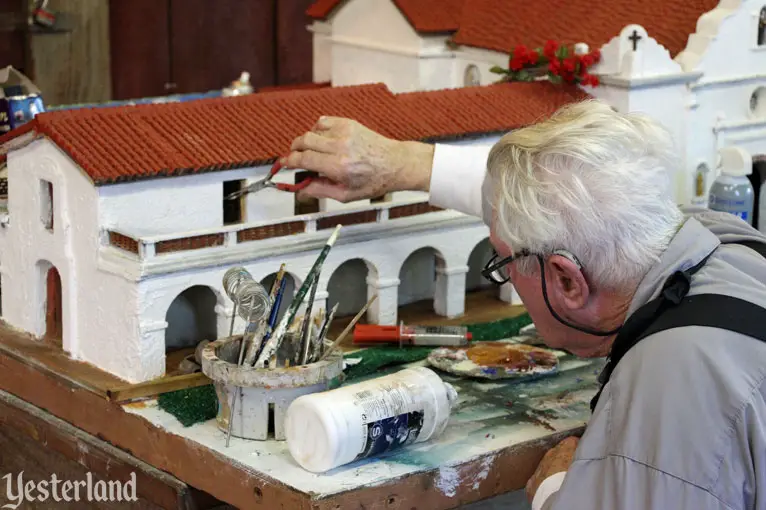
Photo by Chris Jepsen, 2014 Bob Weir working on the restoration of Mission San Luis Rey |
|||
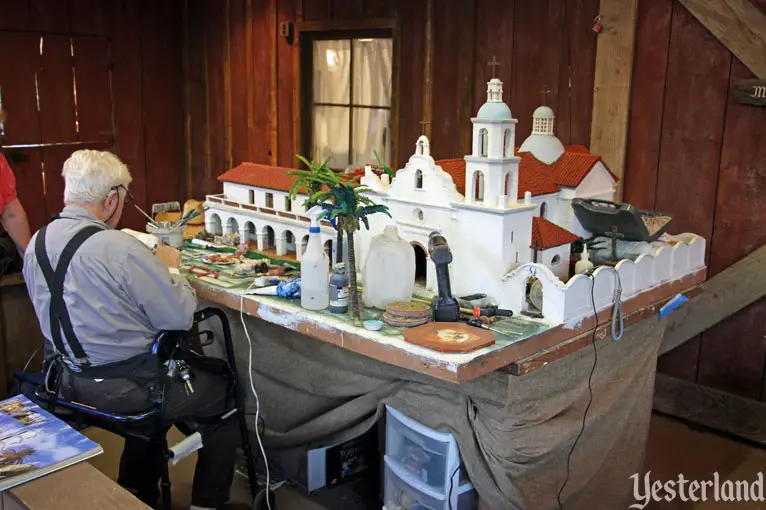
Photo by Chris Jepsen, 2014 Nearly completed restoration of Mission San Luis Rey |
|||
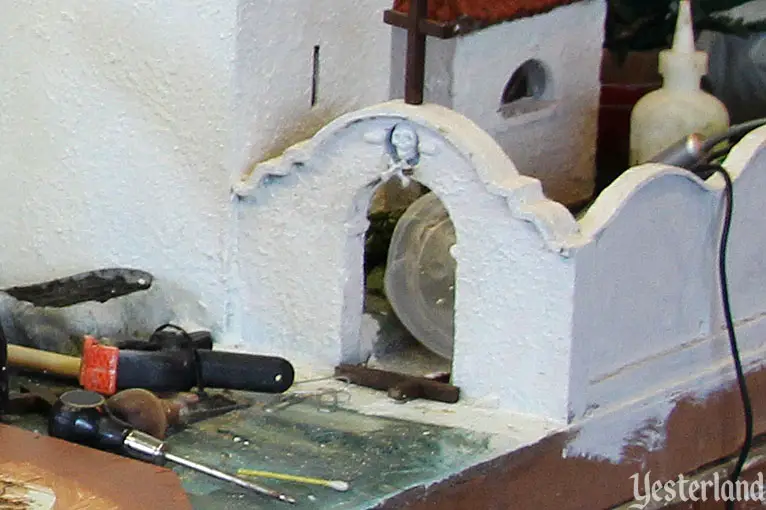
Photo by Chris Jepsen, 2014 New cemetery entrance arch at San Luis Rey (detail from the previous photo) |
|||
|
Weir took his assignment seriously. He bought books about the California Missions, visited them, took photos, and applied his considerable skill to making the models look better than ever. As part of his restoration of the Mission San Luis Rey model, Weir added a skull and crossbones to the cemetery entrance arch—based on what he saw at the real mission. Details like this make a model more authentic and more fun for guests. Weir was unaware he was adding a feature that came from the scenic designers at Walt Disney Productions in 1957. To continue this story, we’ll head southeast from Buena Park to Oceanside. |
|||
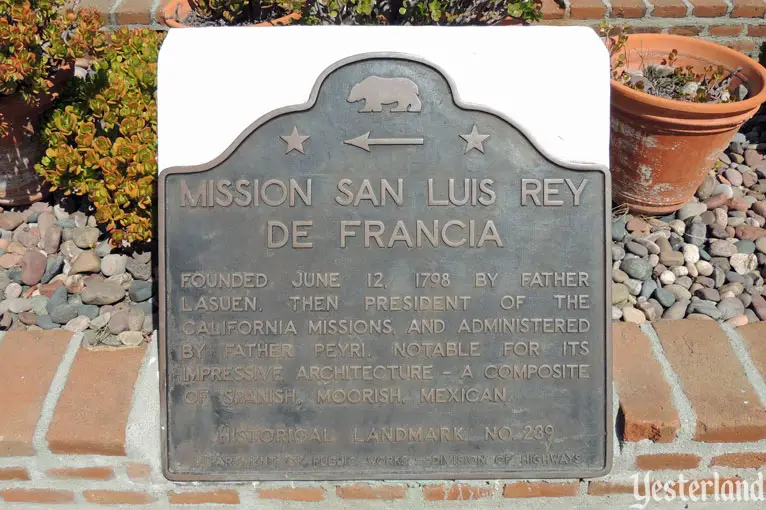
Photo by Werner Weiss, 2016 California Historical Landmark No. 239, Mission San Luis Rey De Francia, Oceanside |
|||
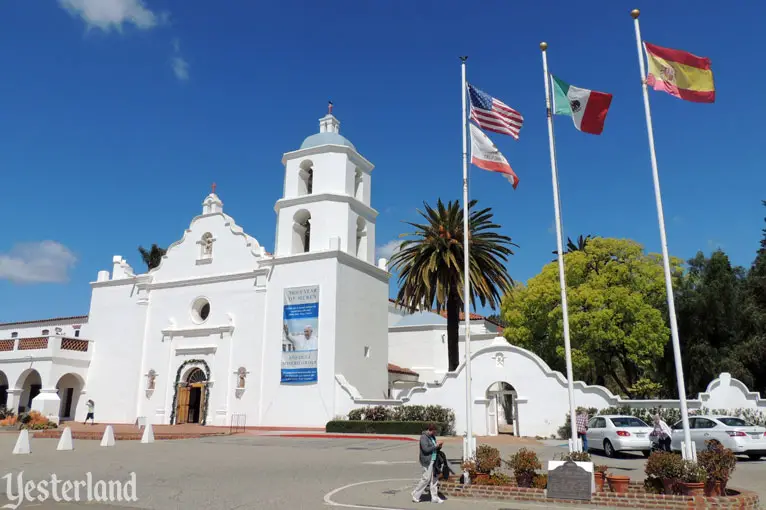
Photo by Werner Weiss, 2016 Church on the left; cemetery on the right |
|||
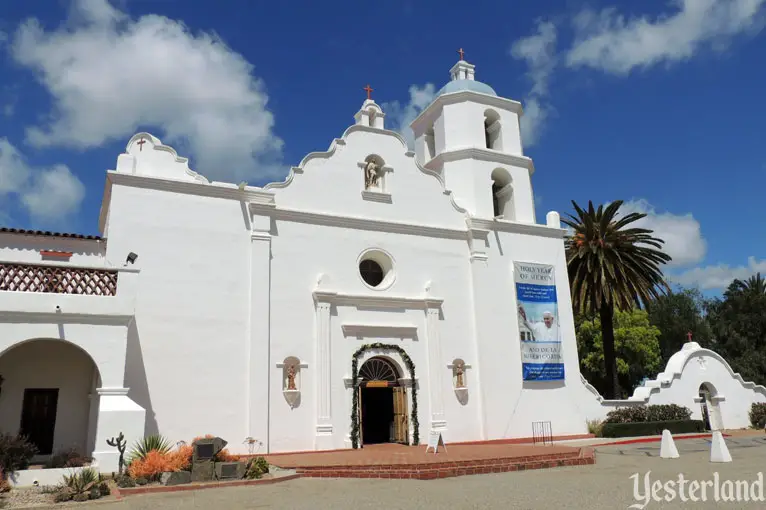
Photo by Werner Weiss, 2016 Mission San Luis Rey, looking much like the model at Knott’s |
|||
|
Mission San Luis Rey was founded in 1798, and the church was completed in 1815. The mission looks great these days. You would never know what happened in 1926—the bell tower, which had been damaged by an earlier earthquake, collapsed in heavy rains; the replacement bell tower was dedicated the following year. |
|||
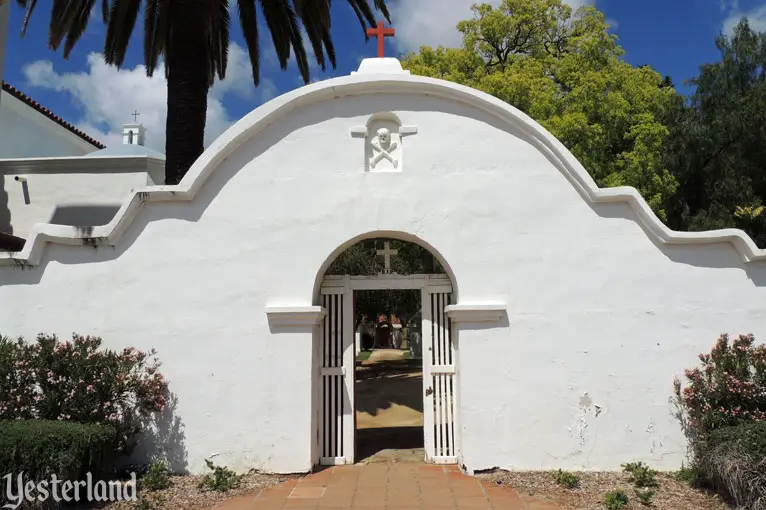
Photo by Werner Weiss, 2016 Cemetery gate at Mission San Luis Rey |
|||
|
You might also think the skull and crossbones were always there. It’s an appropriate feature for a historical Franciscan cemetery—and a great photo op. The mission has a museum about its history. (It’s well worth the modest admission fee.) We’ll now take a quick look inside. |
|||
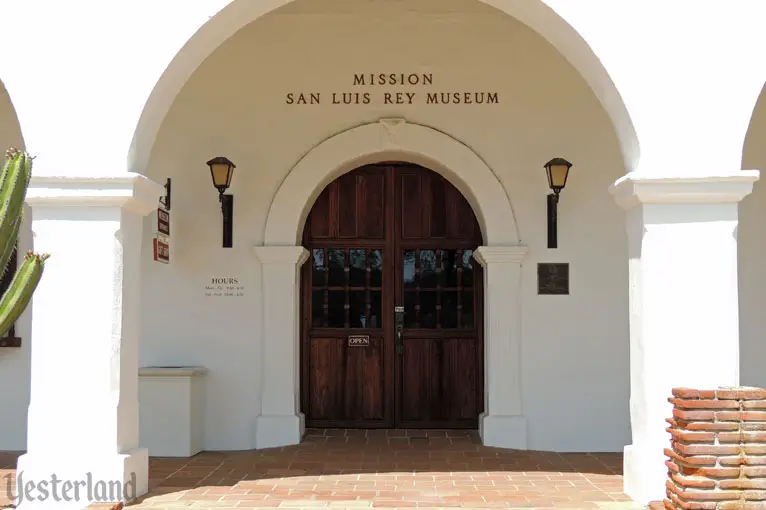
Photo by Werner Weiss, 2016 Mission San Luis Rey Museum |
|||
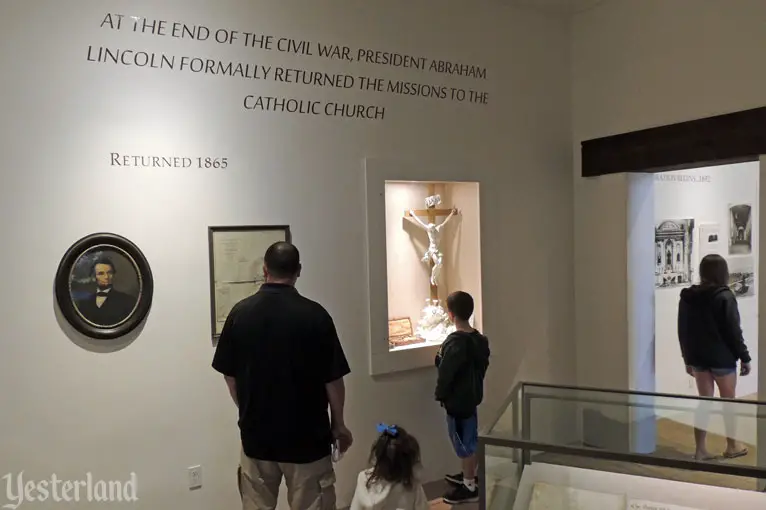
Photo by Werner Weiss, 2016 Inside the museum |
|||
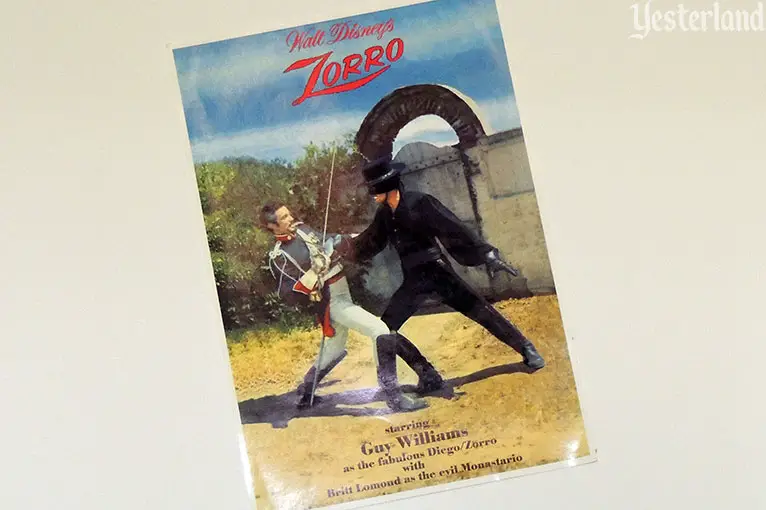
Photo by Werner Weiss, 2016 Poster for Walt Disney’s Zorro in the museum |
|||
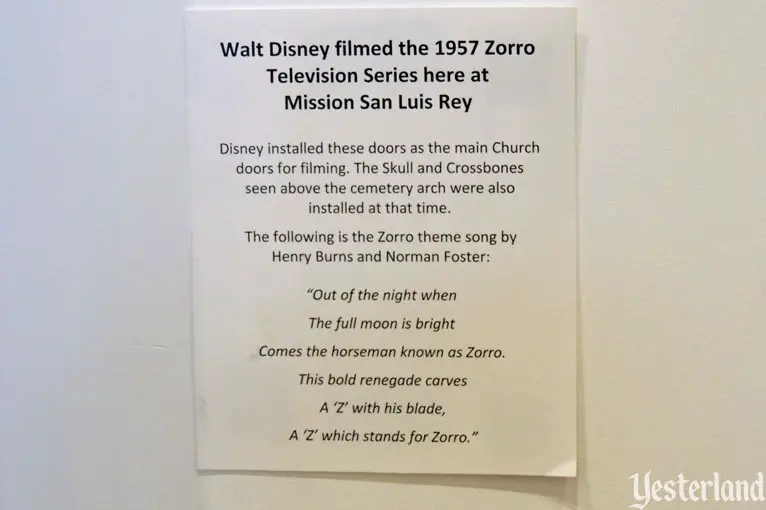
Photo by Werner Weiss, 2016 Museum label describing mission features inherited from Walt Disney’s Zorro |
|||
|
Walt Disney’s Zorro—a half-hour, black-and-white television series with Guy Williams in the title role—aired on the ABC network from October 10, 1957, to September 28, 1959. There were 78 episodes. Then, for the 1960-1961 season of Walt Disney Presents on ABC, Zorro returned with four new hour-long episodes. Set in 19th century California, the character of Zorro was somewhat of a combination Robin Hood and Batman. By day, he was aristocratic Don Diego de la Vega. But at night—masked, clad in black, and with his black stallion Tornado as his Batmobile—he would fight on behalf of the poor and downtrodden as Zorro, the fox. He would slash the letter “Z” with his sword to mark his victories. Reading the label at the Mission San Luis Rey Museum, you might be led to believe that Zorro was shot entirely at the mission. Actually, most of the filming took place at the studios of Walt Disney Productions in Burbank. Most exterior scenes were filmed on the newly built Zorro set at the studio backlot. (The Zorro set, sometimes used as a European village set after Zorro ended, lasted until 1992; it was replaced by a parking structure—appropriately named the Zorro Parking Structure.) But at least one early episode (“Zorro Rides to the Mission”), filmed in the summer of 1957, used Mission San Luis Rey as a location. Apparently, Disney’s production designers decided the arch of the mission’s cemetery gate was too plain. They added the skull and crossbones, possibly because they saw it at another Franciscan cemetery. The Disney folks undoubtedly had permission from the Franciscan Padres, who must have liked the results—because the skull and crossbones have now been part of the mission for almost 60 years. Let’s return to Knott’s Berry Farm, where restored mission models have been on display since November 30, 2016. |
|||
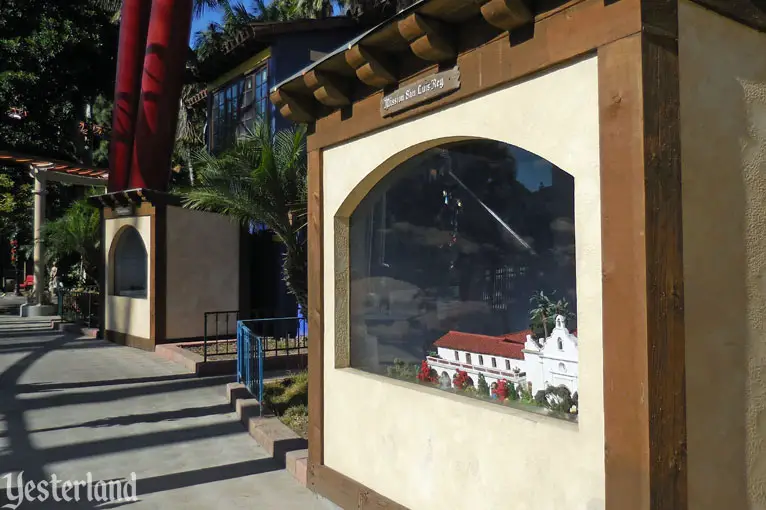
Photo by M.H. Habata, 2016 Mission San Luis Rey in its new display case at Knott’s |
|||
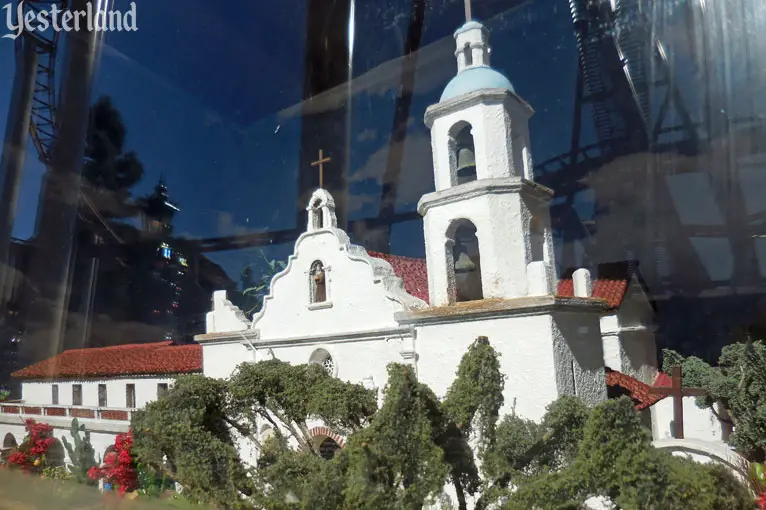
Photo by M.H. Habata, 2016 A closer look |
|||
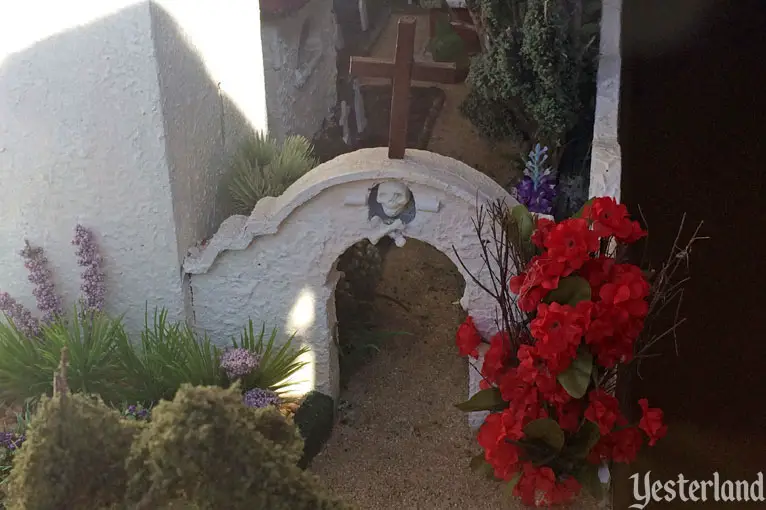
Photo by M.H. Habata, 2016 Bob Weir’s sumptuous landscaping |
|||
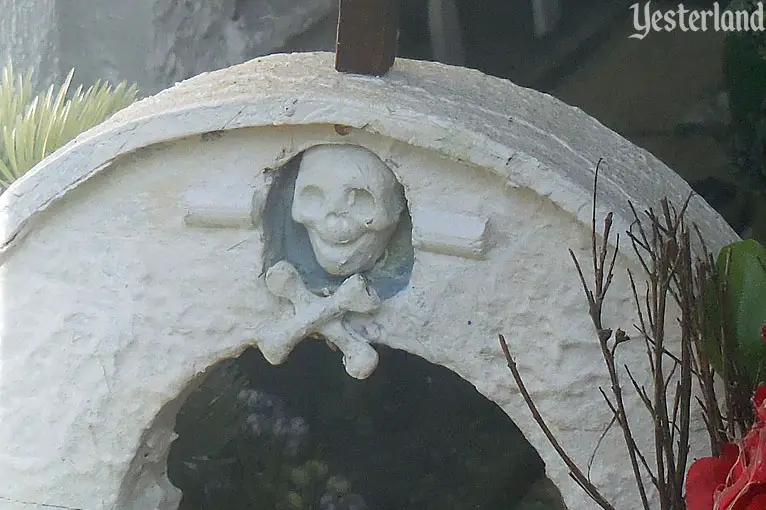
Photo by M.H. Habata, 2016 Bob Weir’s miniature skull and crossbones |
|||
|
And that’s how a scenic element from Walt Disney Productions in 1957 snuck into Knott’s Berry Farm in 2016. |
|||
|
Click here to post comments at MiceChat about this article.
© 2017-2021 Werner Weiss — Disclaimers, Copyright, and Trademarks Updated May 21, 2021 |
|||